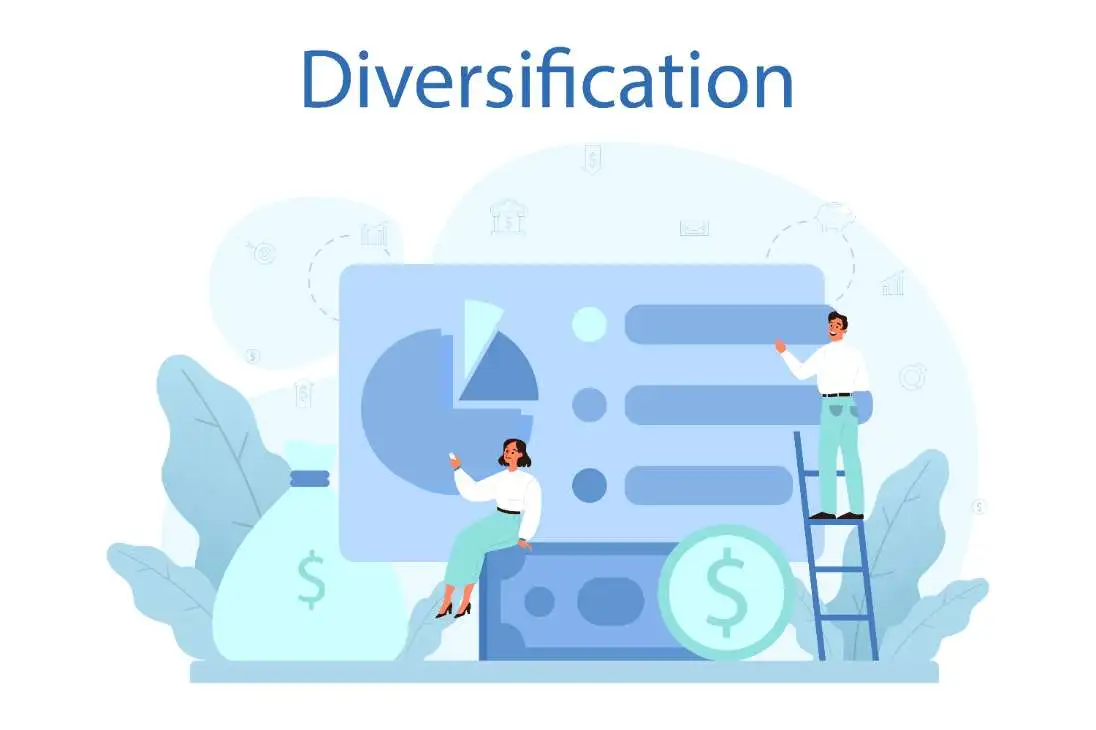Table of Contents
Like many other people, do you still believe that investing requires a huge amount of money? The fact is that you are thoroughly mistaken. In today’s world, even with a small budget, you can build a balanced investment portfolio that grows steadily over time.
Most new investors in India make the same mistake. They focus on just one asset, usually stocks or fixed deposits. The biggest danger with this strategy is that they get exposed to risk when markets fluctuate. If you don’t opt for diversification, you always stand the risk of losing a large portion of your money during downturns.
The good news? You don’t need lakhs of rupees to build a well-diversified portfolio. With a little planning and smart tools, it is still very much possible to diversify your portfolio with a budget.
Read this blog till the end and you will be in a position to know how exactly to create a strong, diverse portfolio that is best suited for the Indian market, even if you’re starting small.
Learn Stock Marketing with a Share Trading Expert! Explore Here!
What Does It Mean to Diversify Your Portfolio?
Diversification is nothing but spreading your money across different types of assets. It can be any type of asset class such as equities, bonds, gold, and real estate so that there is absolutely no dependency on a single investment. In short, no single investment can control your future. Remember the old proverb “Do not put all your eggs in one basket”.? It’s the same logic that applies here.
When one asset is underperforming, others can balance the impact. Here a major benefit is that it helps protect your portfolio and smooth out long-term returns. For Indian investors, diversification can include:
- Stocks: For long-term growth.
- Debt funds or bonds: For stability.
- Gold: A hedge against inflation and depreciation of currency.
- Real estate or REITs: For exposure to a tangible asset.
This approach allows you to diversify your portfolio with a budget that matches your comfort level.
Why Diversification Matters in the Indian Market
1: What is a stock?
As you know India’s economy is growing fast. Having said that, there are times when markets become volatile. Various sectors may go through rise and fall depending on government policies, global events, and inflation trends. In 2020, for instance, equity markets dipped sharply, but gold prices rose by over 25%. Investors who had diversified didn’t just survive, they thrived.
Moreover, diversification helps you:
- Reduce dependence on one sector (like IT or banking).
- Balance risk between high-return and low-risk instruments.
- Take advantage of different market cycles.
For small investors, diversification is the most effective way to grow wealth without taking big risks.
How to Diversify Your Portfolio With a Small Budget
Step 1: Set Clear Financial Goals
Before you invest, decide about the purpose for which you are investing. It may vary based on each person’s requirement as there will be short-term needs, long-term growth, or retirement planning.
When you have a clear goal, it makes things easy as you can choose the right mix of assets. Let’s check the various asset classes that are suitable in the short-term, medium-term and long-term.
- Short-term (1-3 years): Debt funds, gold ETFs.
- Medium-term (3-5 years): Hybrid mutual funds, index funds.
- Long-term (5+ years): Equity mutual funds, stocks.
To diversify your portfolio with a budget, all you need is 500 bucks. Surprised? With just ₹500 per month, now you can start a Systematic Investment Plan (SIP).
Step 2: Start With Low-Cost Mutual Funds or ETFs
For small investors like you, mutual funds are the best option to begin with. Nowadays, mutual funds have occupied a significant share of the gross financial savings of Indian households. Surprised? According to RBI economists, the share of mutual funds in gross financial savings surged to 6% in FY23 from below 1% in FY12.
With SIPs starting at ₹100 or ₹500, you can invest in equity or debt funds with no need to buy individual stocks. Exchange-Traded Funds (ETFs) are another amazing option. They track indices like Nifty 50 or Sensex and come with very low fees. ETFs give you exposure to multiple companies, making it easier to diversify your portfolio with a budget.
Look for:
- Index funds: Nifty 50 or Sensex-based funds.
- Hybrid funds: Mix of equity and debt.
- Sector funds: For small exposure to specific sectors (like pharma or IT).
Step 3: Use SIPs to Invest Regularly
A SIP is your best friend when you’re investing with a small budget. It lets you invest a fixed amount each month automatically. Over time, you benefit from rupee cost averaging — buying more units when prices are low and fewer when prices are high.
This not only reduces risk but also builds a disciplined habit. Even if you start a ₹500 monthly SIP in a diversified mutual fund, in 15–20 years it can grow into several lakhs of rupees. To add on, in 2025 October, monthly mutual fund SIP contributions in India hit an all time high of Rs 29,529 crore.
Step 4: Add Gold and Fixed Income for Stability
In India, gold is a trusted store of value. Including gold ETFs or sovereign gold bonds in your portfolio provides safety during economic downturns. Let’s take a quick look at the returns given by Gold ETFs in 2025. From Jan – November, Gold ETFs have given over 53% return to its investors. On the other hand, people who invested in the Sovereign Gold Bond (SGB) 2017–18 Series III made a whopping 338% return in just 8 years.
Fixed income options such as PPF, NPS, or debt mutual funds give steady returns and protect against stock market volatility. A simple ratio could be:
- 60% in equity (mutual funds or stocks)
- 30% in debt (PPF, bonds, or debt funds)
- 10% in gold and silver
Even with small contributions, this mix helps diversify your portfolio effectively with a budget.
Step 5: Explore Fractional Shares and Smallcase Investments
If you want to invest in direct stocks but can’t afford large amounts, fractional investing platforms and Smallcase are excellent tools.
- Fractional investing lets you buy small parts of high-value shares.
- Smallcase offers ready-made portfolios of stocks built around themes like “Digital India” or “Dividend Growth.”
Both allow beginners to gain diversified exposure without big money.
Common Mistakes To Avoid
- Running behind short-term profits – Focus on long-term goals.
- Not reviewing your portfolio – Rebalance at least once a year.
Key Takeaways
- To start investing, you don’t need to have lakhs of rupees . You can diversify your portfolio with a budget as small as ₹500 a month.
- Use mutual funds, ETFs, gold, and debt options for balance.
- SIPs are the easiest way to stay disciplined and consistent.
- Diversification helps in wealth protection and steady growth of your wealth.
Always review and adjust your portfolio as your goals evolve.
Stock Market Training Reviewed & Monitored by SEBI Registered RA
Trusted, concepts to help you grow with confidence. Enroll now and learn to start investing the right way.
Know moreFrequently Asked Questions
Can I diversify my portfolio with just ₹500 a month?
Yes. Through SIPs in mutual funds or ETFs, you can start investing and build diversification over time.
What’s the easiest way to diversify for beginners?
Start with one or two balanced or hybrid mutual funds. They mix equity and debt automatically.
Is gold a good option for diversification?
Yes. Gold helps stabilize your portfolio during inflation or stock market volatility.
Should I invest directly in stocks with a small budget?
If you’re new, it’s better to begin with mutual funds or Smallcase portfolios instead of buying individual stocks.
How often should I rebalance my portfolio?
Once a year is enough. Check your asset allocation and adjust if one category grows too large.
What are the risks of over-diversification?
Too many small investments can reduce your overall returns and make tracking performance difficult.
Can diversification guarantee profits?
No. Diversification reduces risk, but it doesn’t eliminate it. It ensures that no single investment can ruin your finances.















